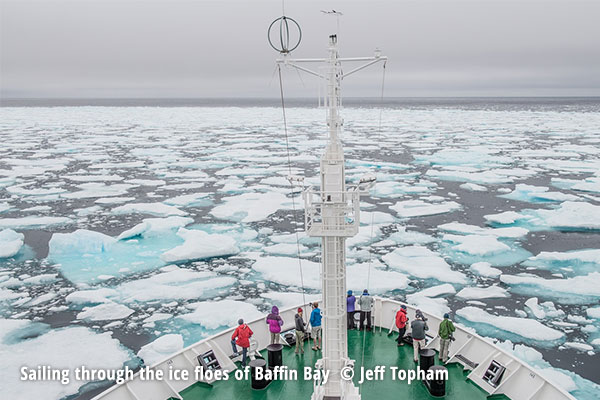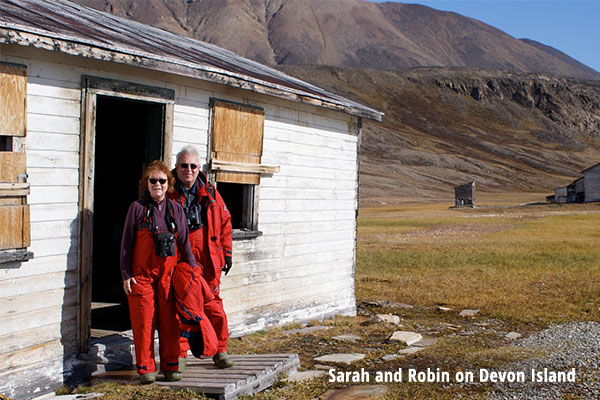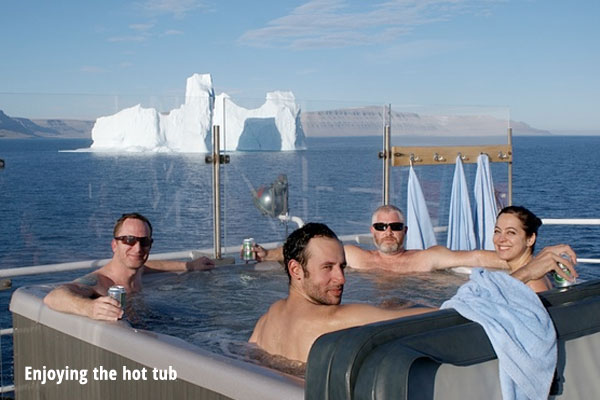
It was a breathtaking encounter: the world’s largest land carnivore posing only a few dozen yards away against a backdrop of misty Arctic wasteland – though I should stress that polar bears were not the only wonders we witnessed in our trip through the Northwest Passage. We also saw Finback Whales, Narwhals, Muskox, Gyrfalcons, Arctic Hare, Snowy Owls, any amount of gulls and a plethora of other seabirds.
In any case wildlife is not the high Arctic’s only attraction. The landscape alone is worth the trip – mysterious, bleak and haunting, with islands stripped of any signs of life save for the thinnest strands of vegetation clinging to the gale-swept ground and crumbling Hudson Bay trading stations abandoned decades ago.

It was a deeply satisfying but surprisingly busy experience. There were constant lectures and talks and, with the exception of our two-day voyage across Baffin Bay, we had at least one shore trip a day: to Beechey Island, where three of Franklin’s men are buried below bleached wooden grave markers; to Prince Leopold Island, whose soaring cliffs provide sanctuary for tens of thousands of kittiwakes, fulmars and guillemots; and to the Inuit towns of Sisimiut and Pond Inlet.
These journeys involved the donning of thermal underwear, woollen shirts and heavy-duty waterproof gear – which might seem surprising given that temperatures rarely dropped below zero. However if you don’t have proper clothing, long journeys in open Zodiacs, in fierce cutting winds, can seriously chill the blood.
It was by no means an arduous holiday. The food on our ship, the Akademik Sergey Vavilov, was lavish; there was a cocktail of the day and a happy hour; a hot tub on deck; and yes, bars of chocolate were left on our newly made beds every evening.
My wife Sarah and I did have two main worries before setting off: rough seas and fellow passengers. We got well-informed, amusing and articulate shipmates. Some were the best-travelled individuals I have ever encountered. Others had spent their savings just to make this journey, to see a land in melting transition. It was a humbling experience.

Indeed that trip, on a glorious August evening, was especially exhilarating as we cruised through the narrow channel from Atlantic waters to those of the Pacific, towards the setting sun. At one point we could see a lone wolf on the shore watching us. Later a polar bear swam across our bows. And that is not your everyday holiday experience.
To browse upcoming Arctic expeditions, please click here.



